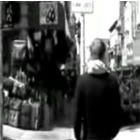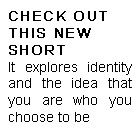What's a money order?
Following up on my post about how to use PayPal, I recently had to create a money order. I had no idea how to do this. As it turns out, it's very easy, much like a check and yet much more secure. Here is an article, I found that really helped me out. NOTE: I did mine through USPS.
Money orders are safer than checks, for purchaser and recipient. Since it's prepaid, it can't “bounce” or overdraw the purchaser’s bank account. They can be cashed all over and handy for those without bank accounts. Filling one out can be tricky, especially if you rarely do it. To learn how to buy one, fill one out or cash one, we’ve got you covered.
How to Buy a Money Order
- Know the exact amount you need the money order for.
- Obtain monies required to pay for the money order. They can be purchased with cash, debit cards or travelers checks. Some places accept credit cards, as well, but some may not take debit cards or travelers checks. Cash is accepted everywhere. Before buying your money order, find out the accepted form of payment.
- Compare your options. You can purchase money orders at U.S. post offices, most banks, and many grocery store customer service desks, convenience stores, and check-cashing businesses. You can also now purchase money orders online, and the company forwards the money order to the payee. The fee charged (in addition to the amount of the money order) varies considerably, so shop around, especially if you use them frequently. At AMSCOT they offer free money orders. But if you don't get it at AMSCOT, be prepared to pay anywhere from 50 cents to a $4.00 fee for the money order at most places (you can easily find places charging under $1.00 unless it's online). However, your bank might waive any fees. There also may be a maximum dollar amount for each money order, so you may need to buy a few if sending more than a few hundred dollars.
- Purchase the money order and fill it out immediately. If sending your money order to one outside the country of origin, ask specifically for an international money order, and make sure that the money order can be used in the country you are sending it to.
How to Fill Out a Money Order
- Write the name of the person or company whom you wish to pay on the “Payee,” “Pay to, ”or “Pay to the order of” line. Write your account number with the company to which you are sending the money order, or include any other important identifying information on this line if there is no other line designated for this information. Do this immediately so it cannot be cashed by others if lost.
- Fill in your name on the “From,” “Purchaser,” “Sender,” or “Remitter,” field. You may also put your account number or other identifying information here if no other space is provided.
- Write in the addresses. Where it says "Purchaser's address" write in your address, not the address of the person or company you're sending it to. If there is only one address field, write your address unless otherwise noted. Many money orders do not include a field for the address of the person or company to whom you are sending the money order.
- Sign the money order. There may or may not be a place for you to sign the money order. If there is, it will be on the front of the money order, and it will be labeled as something like “Purchaser, Signer for Drawer,” “Purchaser’s signature,” or simply “Signature.” Do not sign the back of a money order, as this space is usually for the payee’s signature.
- Fill in the “Memo,” “C.O.D. Number,” “Re:,” or “Used for” space. Not all money orders have this space, but if yours does write your account number with the company to which you are sending the money order or other identifying information so that they know what you are sending the money for.
- Keep your receipt. Your money order will either have a carbon copy underneath or a portion attached (usually to the side or top) to detach and keep for your records. Keep this receipt should the money order get lost or the recipient denies recieving it. This receipt should have a tracking number to check on the status should problems arise. Without the receipt or tracking number you may be unable to verify the money order was received or to obtain a refund if it is lost.
Tips
- Always use a pen when filling out money orders.
- You can cash a money order at banks, check-cashing businesses, and many places where money orders are sold. Post offices will only cash U.S. Postal Service money orders. Some establishments will charge a fee for cashing it, but you should be able to find someplace that will not. You will need to endorse (sign) the back of the money order and present valid identification in order to cash it.
- Money orders usually have no expiration date, but there may be a service fee charged if the money order is not cashed for a long time. This policy should be disclosed on the money order itself.
- If the intended recipient of the money order claims it was never received, or if the money order is lost or stolen, you can call the phone number on your receipt or, in many cases, visit the agent from whom you purchased the money order to find out the status of the money order. It is very important to keep the receipt stub.
- If you make a mistake in filling out the money order, return it to the place where purchased and ask for a refund or another money order in exchange.
- If you decide not to use the money order and you have already made it out to someone else, return to the place you purchased the money order and ask for a refund or another money order in exchange.
Warnings
- A blank money order is the same as cash. Fill it out right away. If it gets lost or stolen, you are out of your money.
- Be very careful and discreet when carrying a large sum of money to purchase a money order.
- Either party listed on the money order may cash it. Be sure to fill out both sides completely.





















0 Responses to What's a money order?
Post a Comment